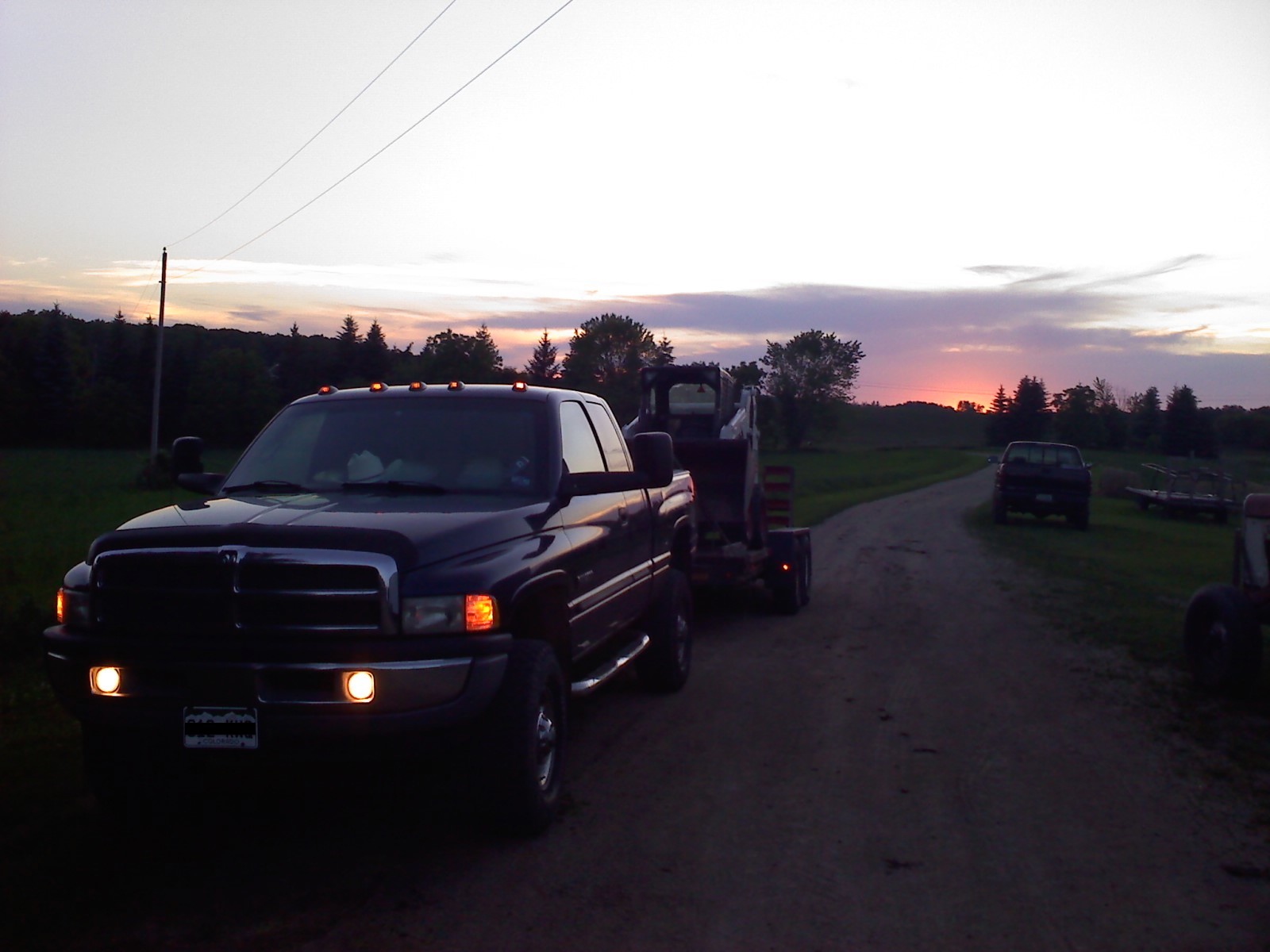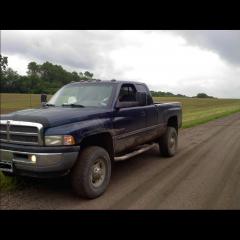
Everything posted by trreed
-
Performance Upgrades
You'll have enough fuel for a S300g. The turbo you posted looks like a newer version of an older Dodgezilla turbo. Without knowing the size and source of the PDR compressor wheel it will be hard to compare efficiency to a Borg Warner. But I can tell you the SXE line of Borg turbos are very good at smoke control and efficiency, but will need a full 4" exhaust. Based on the modifications you listed out as potential upgrades, you'll be in the 450 hp range, which will (and this is an assumption) overwhelm the PDR turbo, because I'm fairly certain it is just a HX35/40 hybrid.
-
Quadzilla or lift pump first?
I think the high temp code trips at something ridicously high like around 200*. Highest fuel temps I’ve seen are 163* towing a loaded gooseneck horsetrailer at 80 mph for hours
-
Testing Injector Pop Pressure in the real world
I see where it kicks up to about 1/4 load at 0 throttle input right as RPMs drop to idle. Line 4285. Do you have an oscillating surge when rpms drop to idle after high power runs? Cause I do.
-
Quadzilla tunes for big turbo
I just re-read and caught that it's a silver bullet. Means the 74mm turbine wheel. There's the issue.
-
Testing Injector Pop Pressure in the real world
I chalked it up to angry VP and kept going. Though, @Dodgeih and I do have the same size injectors. Could be an injector thing.
-
Quadzilla tunes for big turbo
Bump your fuel sliders up until you get a comfortable amount of haze. When I ran that combination I was starting a 98%. Also, check for leaks.
-
24V fuel filter fittings help
Stock fittings are all M14 x 1.5. As posted above, Vulcan is a great place to get the fittings. To adapt 1/2" fuel line, you would need a M14 x 1.5 to -8 AN adapter, and then a -8 AN to 1/2" pushloc fitting.
-
Testing Injector Pop Pressure in the real world
Mine did that this past weekend, but while I was coasting in neutral. Couldn't put words to what it did at the time but that's exactly it.
-
Quadzilla V2 Custom Tunes
Rotational mass is going to have a much greater effect than static wieght. You did go 2 cm wider, but also an inch taller because you kept the same sidewall ratio. so your rotational mass grew exponentially, and as you can see, has dropped your mileage more.
-
Quadzilla or lift pump first?
Yeah, the more you move it, the more it heats! If you get diesel too hot (and WAY hotter than a lift pump or VP ever could), you'll get black gunk breaking out of the fuel. I forget what that is called.
-
Top hat valve seal and valve train
You can do two cylinders at a time cause there's three sets of sister cylinders.
-
Quadzilla or lift pump first?
I didn't install a backup because I had the in-tank retrofit, which was replaced with a Draw Straw 5, and I can't put a stock on-block pump back on for a couple reasons, and I have too much plumbing as it is. But belt replacement is 10 minutes tops with a 15mm wrench... So I'm not worried about not having a backup. Plus, the lugs on the belt itself are WAY over sized for the application. I'm not worried about anything getting to it, and I've had it on plenty of forestry roads with no issue.
-
Problems with dead pedal between 25mph and 45 mph
I wouldn't worry. The return from my regulator is only 3/8" and handles way more fuel than the head/injector return with no issue.
-
Problems with dead pedal between 25mph and 45 mph
Return from where? Your airdog should already have a 1/2" return. The return from the injectors/head won't return enough fuel to warrant a need for a 1/2" line.
-
P pump conversion
We had just had an injection line break off halfway through a trip to Arizona the weekend before the eclipse. And IIRC he didn't get the new line in for a while. 6 hours of sucking raw diesel fumes will make anyone not want to drive it for a while.
-
Problems with dead pedal between 25mph and 45 mph
WOT vs daily driver is a small piece of this. The core is still when a pump is loaded, the flow rate falls. Just taking one of these pumps up to the 15-20 psi pressures we need cuts that advertised flow down. And then we get into the driving habits pulling the flow down even more. 2.5 GPH demand is still 2.5 GPH demand. And having a pump advertised at 150 GPH that really puts out 1/3 of that flow at operational pressures is just bad practice. Good marketing, but bad practice.
-
Problems with dead pedal between 25mph and 45 mph
With more demanded pressure, flow will decrease as load on the motor will increase. Again, the advertised flow rates are at zero restriction. Pump efficiency curves are always advertised in pressure head (usually feet or meters) vs flow rate (GPM, GPH, etc), and then have the efficiency ellipses overlayed. I doubt we can get ahold of Pure Flow's pump curves for the AirDog, but every pump curve has a negative relationship between pressure head and flow, while power demand increases. So you're telling me you have 100 GPH going through the restriction in the return without overloading motor or excessive fuel heat and 50 gph actually going to the VP? I doubt that very much. @AH64ID has posted repeatedly about how the filters for the AirDog are 90 GPH filters. Makes one wonder why the under sized filters unless Pure Flow knows their pump is only a true 150 GPH pump without restriction. The only way to actually tell would be to put flow meters on the inlet and both outlets of the pump to compare inlet flow to outlet flow. However, that poses additional issues based on the type of meter you use. If you use the turbine type, you need to have laminar flow into the turbine for an accurate reading, which is challenging with the amount of 90* elbows in most systems.
-
Problems with dead pedal between 25mph and 45 mph
Not to throw a wrench in everything here, but those "150 GPH" and "165 GPH" ratings are flow on an unrestricted pump at 0 psi.... When the pump starts to make the 15-16 psi pressures they're set at, the flow drops to around 50 GPH... and less as the demand increases. Both FASS and AriDog are overrated, and their advertising gimmicks are just that. Just my opinion. So my recommendation is to get a mechanical pump. My pump was benched and flows 55 gph at 2000 RPM and 110 GPH at 4000 RPM. It's similar to a GDP FuelBoss
-
1981 Chevy C70
Hood off, engine out. That block should look tiny in that engine compartment. Ensure your hoist can lift high enough to clear the core support, or take the grille off. Or take the front tires off and set the axle on the ground.
-
P pump conversion
The biggest thing is pulling the cam to be able to change the gear case to a p-pump style case. Then there's the timing gear change (most go for an adjustable timing gear which then you lose your breather) and lines, TPS bracket, FSS wiring, high rise intake plenum, pump bracket and oil feed, and obviously the pump itself. Then, you have to ensure your fuel system is up to the task of feeding the p-pump at 20 psi minimum. Injector change is not required. As a higher horsepower truck, my VP is my limiting factor anymore. But I still like it, and when this one dies I'm going to have to seriously weigh if I do the swap.
-
'The Boost Bus'
Well, I just purchased a tuner for it, so here goes nothing. Plus, we aren't in our home state where a boat can easily be plopped in the water that's close to your house.
-
Diff fluid change
You are correct. Moving too fast and grabbed the wrong picture. But, he won't be able to see the clutches on the trac-lok either. I'd be surprised if he could see the side pinions. I couldn't when I had my carrier out recently.
-
Let loose
-
Diff fluid change
Dana Trak-Loc is set up different. You won't be able to see the clutches, as the carrier is a covered case that splits in half, and there isn't a spring. You will only be able to see the end of the cross piece that holds the 4 spider gears.
-
Time for a clutch
Well now there's a question with a ****load of variables. Machining tolerances of both the crank and the rear cover will affect it, as well as the tolerances of the seal itself. Was the crank machined 0.0005 larger than spec while the seal was formed -0.0005 below spec? There's quicker wear on the crank and more chance of leaking. Does the seal fit tight enough in the rear cover that the sealant is more effective than a looser fit? What kinds of heat cycling has the seal seen? How much lateral and axial play is in the crankshaft? Is the seal true or out of round? This list can keep going for a long while. Sure, you can calculate an 'average mileage' for the seal life, but with so many outliers in both directions an average won't mean much.






